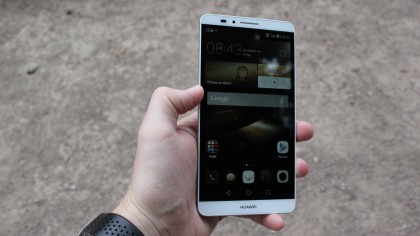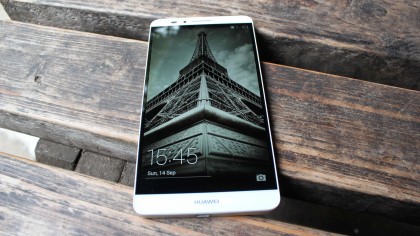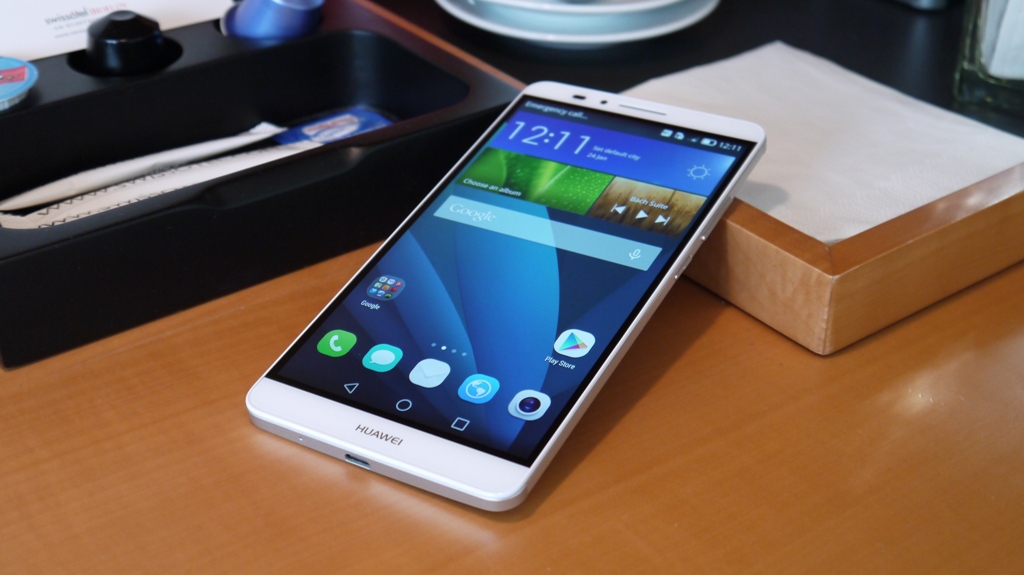Why you can trust TechRadar
Battery life
As you will no doubt have gathered by now, there's a lot of strain being put on the power pack inside the Huawei Ascend Mate 7. The Chinese company has loaded the handset with a non-removable 4,100mAh battery.
That's a significant boost over, for example, the 2,800mAh battery inside the Samsung Galaxy S5. But then again, the bigger they are, the harder they fall. So how did the Ascend Mate 7 cope?

Surprisingly well, as it turns out. An intensive, 90-minute video with all the bells and whistles (NFC, Bluetooth, screen brightness) turned up/on dropped a fully charged battery to only 91%. With moderate day-to-day usage on conservative settings, I was actually able to eke out just under 36 hours between charging.
This was helped, in part, by the wide variety of options Huawei gives you to limit the battery consumption through the power saving options. Notably, the ability to switch off juice-sucking apps or a quick flip to access the Ultra saving mode when I knew I wasn't going to be using the phone for a while.
And even if you can't be bothered to optimise everything all the time, a quick scan through will automatically let the phone sort it for you and add a couple of extra minutes to the battery life.
But, and there's always a but, you'll note that I mentioned "conservative use" in the paragraph above. Because, like all smartphones, if you really hammer it, the Ascend Mate 7 won't last the day. Gaming and movie-watching are obviously big draws because of the power drain of the 6-inch HD screen.
I feel it's right to point out at this juncture that if you're looking for optimal battery life on a handset, buying a phablet is probably not the right way to go.
Calling
Getting past the point that talking using this handset makes it look like you're holding a small baking tray against your face; the Ascend Mate 7 isn't bad. It uses a dual antenna will automatically scan and detect the strongest signal in your vicinity and lock onto it.
During my time with the handset, I never experience a dropped call while I had even a slice of signal. Which, in 2014, is really not saying much – it's about the most minimal thing our modern smartphones have to do. In-call volume is suitably impressive and works not only for handset calls but when you're using speakerphone as well.
The contacts app is basic but functional and also builds in your text messages which you can view by swiping right. Swipe left, and you're given a dial pad so large that a bear could operate it.
Messaging
Given the size of the Ascend Mate 7's display, running off a quick message can either be extremely easy or quite frustrating depending on how many hands you're using. Cradle the handset in both paws and you can use your thumb to fire off essays of text in no time at all. But try doing it one-handed with just your thumb and it'll take a mite longer.
This can be alleviated slightly with Huawei's one-handed mode which, as with the notification keys, will shift the keypad to whichever side of the screen is most convenient for the hand you're holding it in.

The default keyboard is competent enough at picking up my speedy texts, and it also includes a swipe-to-text feature if you prefer gliding over the keys. Obviously, if you're a lover of SwiftKey, or any other third-party keyboard, then you can get it through the Google Play store.
Huawei's messaging app isn't the nicest to look at, but chances are you'll be using Whatsapp, Google Hangouts, Skype or Facebook Messenger as well, so no harm done. As an aside, predictive messaging was pretty much spot-on during my usage, which is a definite positive.
Browsing
The Ascend Mate 7 comes with Google's Chrome browser and its own in-house option. The latter, like the messaging app, doesn't look particularly attractive but offers all the functionality I expect. The options are located along the bottom, rather than at the top near the address bar as they are in Chrome. Again, with the size of the screen, this is a useful change.
There's tabbed browsing, as well as the option to bookmark, share a page or copy a link. Also thrown in are useful features like incognito browsing and the find on page feature that lets you scan a web page for a particular word or phrase.
Chrome's ability to sync with the desktop version is undoubtedly a popular feature that will probably edge out Huawei's own offering. Chrome was marketed on the strength of its speed, but as far as I could tell, there wasn't much difference between the two when it came to loading up pages.
